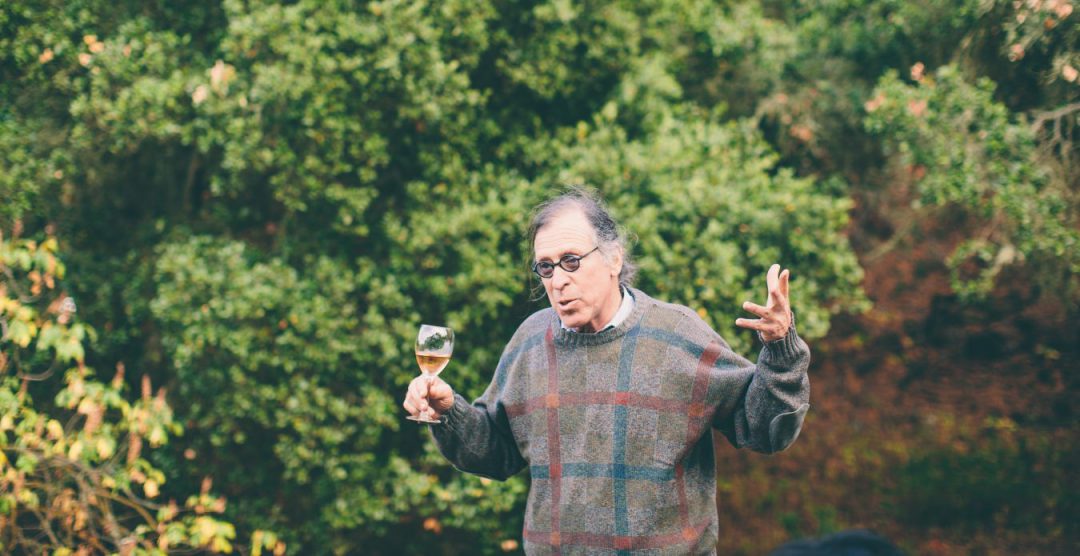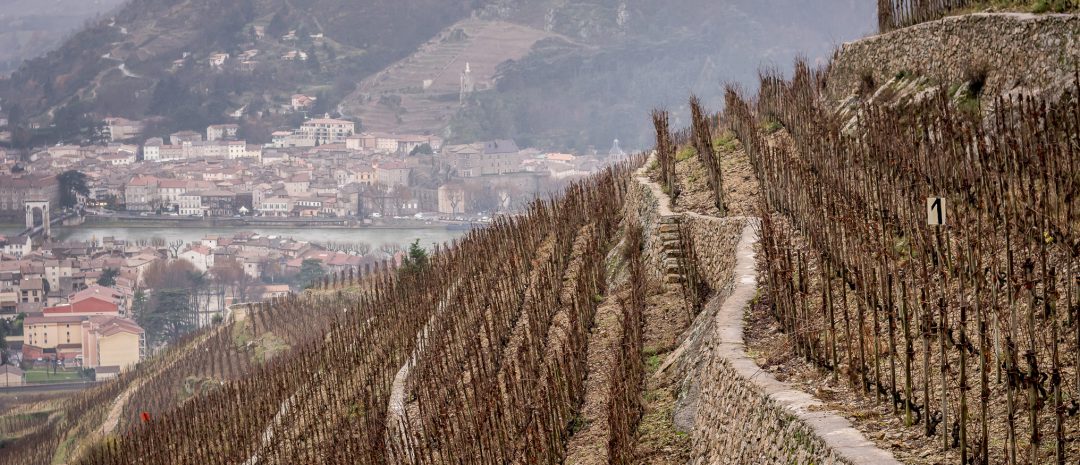Photo credit: Hermitage, Jasper Van Berkel
In today’s saturated global marketplace, we are spoilt for choice when it comes to alcoholic beverages. Beer, cider and spirits, like wine, all have their devout clientèle. In fact, in many places, wine sales pale in comparison to these giants. If intoxication is your main goal, they all ‘do the job’, often much more cheaply and quickly than wine. And each drink has its band of enthusiasts who prefer the taste of their chosen tipple.
So, why does fermented grape juice hold such an exalted position in the hearts and minds of enthusiasts the world over?
Let me count the ways…
Wine has a number of powerful assets that differentiate it firmly from other inebriants. Its perceived quality, authenticity and luxury, its uniqueness – with no two wines ever quite the same, the wealth of interesting new developments to appeal to the new information hungry, internet generation, wine’s image as a health conscience beverage. I could go on, but will spare you any further evidence of my propensity to ramble.
The Potent Allure of History & Rarity
The earliest evidence of cultivated vines date as far back as Georgia circa 6000 B.C. (click here for more information).
In ancient Egypt beer, made from Barley loaves, was the drink of the masses. Only the wealthy elite could afford to drink wine. This trend is seen through out history, with the poor drinking cider, mead and beer in Medieval England, while the nobles drank wine. Wine’s symbolic association with luxury, remains a persuasive sales incitement for the upper classes in many developing markets, like China, today.
Another facet of what drives consumers to value wine so highly is its perceived authenticity and rarity. The Schloss Johannisberg estate of the Rheingau was founded around 1100, while Louis Latour has been passed down from father to son in Burgundy since the 1700s. Owning a wine from a generations-old estate feels to many like holding a piece of history in one’s hand.
Regions like Burgundy, where many growers have as little as a few ares of different vineyard parcels, introduce a notion of scarcity for certain top wines. In a 2014 Sotheby’s Hong Kong auction, a parcel of 114 bottles of Romanée-Conti sold for a whopping 1.6M $.
While certain spirits can claim high retail prices, low production volumes and a long history of high quality, none have such a long and storied past.
The Vintage Mystique
Whereas the majority of beers, ciders and spirits strive to offer a consistent style and quality from one batch to the next, wine is the only beverage that has introduced the notion of bottlings by vintage. Variation in colour, aromas and flavours from one year to the next is not only accepted, but is indeed a major part of the fascination for many collectors. En primeur week in Bordeaux, where wine is pre-sold from barrel before release, is a major part of the global wine trade calendar, stirring buyers and media alike into a frenzy.
Every winemaker and wine lover will tell you stories of their greatest vintages…the 1977 Dow’s vintage port, the 1945 Château Latour and so on. Just ask any winery what a popular critic’s judgement of the region’s vintage can do. When the Wine Spectator ran a feature on the excellent quality of 2010 in the Southern Rhône Valley, purchase requests flooded into Domaine de Longue Toque in Gigondas.
The evolution in style, from one year to the next, keeps wine collectors hooked.
The Triumph of Terroir
Terroir…a term that intimidates and impresses novice wine lovers in equal measures. No wine expert has every successfully summed up the concept in simple, concise terms. And this is a major part of its appeal. No one dares to refute a claim that they don’t fully understand!
Wine connoisseurs world-wide grow starry-eyed detailing the aromatic qualities imprinted on a wine by a specific soil type, weather pattern, altitude, and so forth. They speak confidently of Rutherford dust, Coonawarra terra rossa, and the slate soils of the Mosel. The vertiginous slopes of the Côte Rôtie and the patchwork of individual Burgundian climats are familiar and well understood arguments for the superior quality of the region’s wines.
Many beer, cider and spirits brands also claim certain aspects of weather and soil as the secret to their flavour. There is no denying the powerful aromatic effect the peat-rich soils of Islay have on local whisky’s like Laphroaig. But what lacks, in comparison to wine, is a consolidated approach adhered to by the entire category. Check any winery’s website and they will undoubtably boast of unique soils or old vines or ideal climate…some factor of “specialness” attributed to the vineyards and site.
The Dizzying Diversity
Yet another point of differentiation for wine is the sheer number of different grape varieties and wine styles available. Estimates vary, but there are said to be over 10 000 different wine producing grapes. Styles vary from white, rosé and red to still, sparkling, late harvest, fortified, botrytis-affected and so on. The sheer wealth of choice, from grape, to style, to vintage, to terroir, makes wine an endlessly appealing, singular beverage category.
The Cult of the Wine Professional
With the rise of vineyard plantings in countries around the globe, a new generation of passionate, innovative winemakers has arisen. In my grandfather’s generation, outside of a handful of prestigious regions like Bordeaux or Champagne, the grape grower and winemaker were rarely viewed as more than peasant farmers. Nowadays, they are revered creatures, adorning glossy wine and lifestyle magazines.
These new champions are keen to share their love of all things wine with all who will listen. This plays nicely to the information hungry, internet savvy Millennial consumer. Blind allegiances to specific appellations, estates or wine shop recommendations are a thing of the past. Today’s young wine drinkers research. They want to know as much as possible about what they are buying. From vintage reports, to blending variations, to emerging vineyard areas, to new grape plantings, today’s wine trade has never had so much to say, and such an enthusiastic audience.
The rise of sommeliers and chefs as gatekeepers to fashion in alcohol sales is also a boon for wine. Whereas beer and cider are traditionally categorized as pre-dinner or bar drinks, and many spirits proferred as digestifs, wine is considered the perfect mate for the main event…the meal. This gives wine a strong advantage, making it as much an everyday, rather than occasional, refreshment.
Given the aforementioned stylistic array of wines available, there are food pairing options for every type of cuisine from aromatic whites for Asian dishes to big Napa Cabs for steak.
And the Trump Card…Health!
Famous French scientist, Louis Pasteur, declared wine to be the healthiest, most hygienic of beverages. He advocated wine over water in a time where contaminated water sources led to many disease epidemics. More recently, the concept of the French Paradox, the antioxidant effects of the polyphenol Resveratrol, has revived the connection between wine and good health.
Studies abound that show a correlation between moderate wine drinking and decreased levels of heat disease, stroke, diabetes, and so forth. In a recent Wine Intelligence survey of Chinese wine consumers, the purported health benefits of wine are given as a major reason consumers are switching from whiskey and beer to wine.
At 8 – 14% alcohol, as compared to 35 – 50% for most Vodkas, wine is considered a lower alcohol alternative. This is a strong sales argument in cultures like the UK where binge drinking is an ongoing problem. Beer and cider can also lay claim to the argument of lower alcohol levels, but generally carry more calories for equivalent alcohol by volume.
In Summary
While competition is fierce amongst alcoholic beverages, wine has a number of compelling features that allow it to stand out from the crowd. Wine carries powerful affiliations with notions of luxury, rarity and authenticity. It is unique in its concepts of vintage and terroir variation. The multitude of different grape varieties and styles further set wine apart. And the rise of the winemaker and the sommelier as trendsetters also play their part. Lastly, wine is the most popular alcoholic choice for health conscience consumers.
Beer may quench my thirst on a hot summer’s day, and cocktails are a fun choice for ladies night out, but wine will always have my heart.



